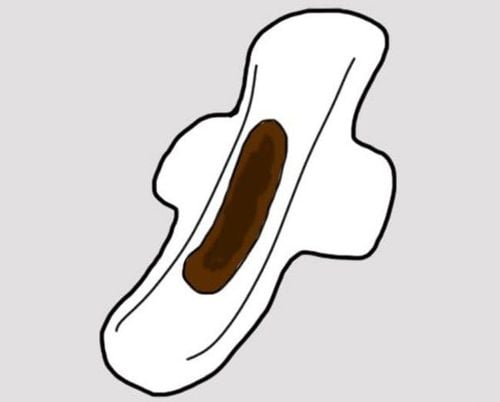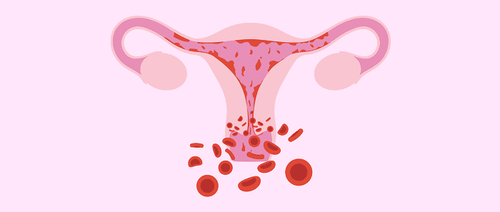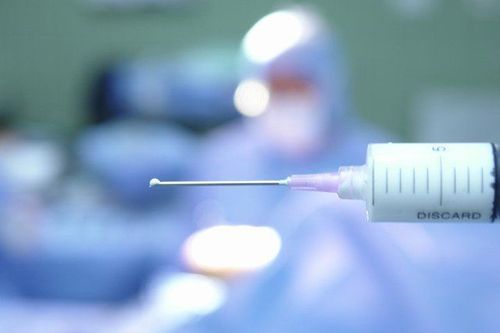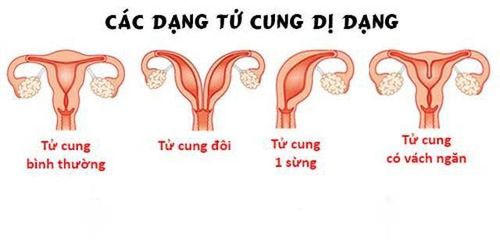This is an automatically translated article.
The article was professionally consulted with Specialist Doctor II Tran Thi Mai Huong - Obstetrician and Gynecologist - Department of Obstetrics and Gynecology - Vinmec Hai Phong International General Hospital.Bicornuate uterus is a type of birth defect, quite common in abnormal types of uterine structure. Women with a bicornuate uterus have quite a few fertility problems.
1. What is a double-horned uterus?
A bicornuate uterus, also known as a heart-shaped uterus, is a birth defect that occurs in about 3% of women. This phenomenon manifests in the condition that both sides of the uterus have a horn-like protrusion and a septum inside the uterus. This malformation is formed due to an abnormality when merging two paramedian tubules (Mullerian tubes) during embryogenesis. This fusion, if done completely, will form a normal uterus. In the event that this fusion does not take place completely, it will lead to a bicornuate uterus malformation, which is more severe than a double uterus.The uterus is where the fetus develops during pregnancy and is also where the placenta attaches to absorb nutrients from the mother. A bicornuate uterus does not affect health but can affect a woman's fertility. In women with a bicornuate uterus, the volume of the uterus is small, which can easily lead to conditions such as miscarriage, premature birth, premature rupture of membranes, low birth weight, abnormal position of the fetus,... Currently, there is no cure. prevention of this defect.

2. Common symptoms in patients with bicornuate uterus
In most cases, a bicornuate uterus doesn't cause any symptoms, so it's usually only discovered during a gynecological exam or during pregnancy. However, a few women with a bicornuate uterus may experience some symptoms including:Abdominal pain, discomfort during the days of ovulation; Severe pain during menstruation; Abnormal vaginal bleeding; Pain during intercourse; Multiple miscarriages.

3. What is the effect of the bicornuate uterus?
Whether a bicornuate uterus can get pregnant is a matter of concern for many women. In fact, women with a bicornuate uterus often have a harder time conceiving than usual and are more prone to many other obstetric complications. Specifically:Difficulty conceiving: People with bicornuate uterus often have a lower chance of conceiving than normal healthy women. The reason is because the uterus is malformed, so sperm when released into the vagina can move into the uterus and fallopian tubes without ovulation, reducing the chances of successful conception; Easy miscarriage, premature birth: Women with a bicornuate uterus have a high risk of miscarriage in the later stages of pregnancy. Miscarriage rate in pregnant women with bicornuate uterus accounts for 1.8 - 37.6% of miscarriages. The risk of preterm birth in women with a bicornuate uterus accounts for 15-20% of preterm births. The cause of this complication is usually because the volume of the uterine cavity is smaller than normal, so when the fetus grows, it will crowd the uterine cavity and appear abnormal uterine contractions, pushing the fetus out even though it is not yet full day. Full month. In addition, people with bicornuate uterus also have abnormal uterine structure, the cervix is short and weak, so the uterus's ability to support pregnancy is reduced. At the same time, the position of the placenta in the uterus is not favorable, which can easily cause miscarriage or premature birth. In case the mother gives birth too early, the newborn will be raised in an incubator with special care by medical staff; Fetal growth retardation: The bicornuate uterus has a small capacity, the blood supply to the uterus is less than normal, limiting the growth of the fetus, causing the fetus to grow slowly. The weight of a fetus born to a mother with a bicornuate uterus is usually about 10% lighter than that of a baby born of the same gestational age; Women having difficulty giving birth naturally: Because the volume of the uterus in those with a bicornuate uterus is limited, it is more difficult than usual to rotate the fetus for those lucky enough to develop until full term. These cases often have the fetal position is not well adjusted, mainly the breech or transverse position instead of the normal head position, so it is difficult for women to give birth naturally and is often indicated by cesarean section. Children with birth defects: Women with a bicornuate uterus are four times more likely to have a baby with birth defects when compared to women with a normal uterus.
4. Diagnosis of bicornuate uterus
After clinical examination, women will be assigned to examine and do other tests to diagnose the most accurate bicornuate uterus. Commonly used methods include:Pelvic examination; Gynecological ultrasound; Magnetic resonance imaging (MRI) ; Hysterosalpingogram (HSG): A method of injecting a special dye, then taking a close-up or X-ray of the uterus and fallopian tubes. This non-invasive medical method helps the doctor to accurately assess the patient's uterine condition to make the best treatment choice; Hysteroscopy: Helps the doctor accurately assess the condition of the uterus to give the correct treatment plan and treat the problem of abnormal bleeding if any.
5. How to treat bicornuate uterus?
Bicornuate uterus is a structural abnormality of the uterus that cannot be treated with drugs. To help women avoid the risk of preterm birth, some treatments may be indicated, including isthmus stitches during pregnancy if there is a cleft palate or a hysterectomy. With the surgical method, the doctor will cut the base of the two uterine horns and merge the two sides together to have the same shape as the normal uterine fundus. This is a measure to expand the volume of the uterine cavity, helping the embryo develop better. Note that after hysterectomy, women need to wait about 3 months to get pregnant to reduce the risk of a woman having a ruptured uterus during labor, and to avoid dangerous pregnancy complications for both mother and baby. .However, because the bicornuate uterus has many different levels, depending on the specific case, the patient will be assigned a treatment method and the treatment effect will be different. There are some cases where the bicornuate uterus is still capable of carrying a normal pregnancy and childbirth without treatment, so the patient needs to follow the instructions of a specialist.
Pregnant women with a bicornuate uterus should regularly monitor and check their pregnancy health to minimize unnecessary risks to the fetus. Pregnant women experiencing this uterine abnormality can be prescribed the hormone progesterone as soon as possible, right from the first weeks of pregnancy, to help the uterus hold the baby longer, reducing the risk of premature birth. Pregnant women with a bicornuate uterus are also often prescribed a cesarean section instead of a vaginal birth to reduce pregnancy complications because of the abnormal position of the fetus.
Bicornuate uterus is a birth defect in the female reproductive organs that can affect a woman's fertility. Therefore, if you have one or more warning symptoms of a bicornuate uterus, you should go to the doctor as soon as possible to get an accurate diagnosis and provide an appropriate and timely treatment plan.
Currently, at the Vinmec International General Hospital system, the package of basic gynecological examination and screening is being applied:
With a team of medical-physicians who are leading experts, highly qualified, dedicated and wholeheartedly for the benefit of the patient Comprehensive and professional medical examination, consultation and treatment service Modern equipment system, supporting effective diagnosis and treatment Modern medical examination and treatment space, Civilization, luxury and maximum sterilization Ensure complete safety and privacy for customers. Modern, efficient and effective model for managing, sharing and connecting information online.
Please dial HOTLINE for more information or register for an appointment HERE. Download MyVinmec app to make appointments faster and to manage your bookings easily.














